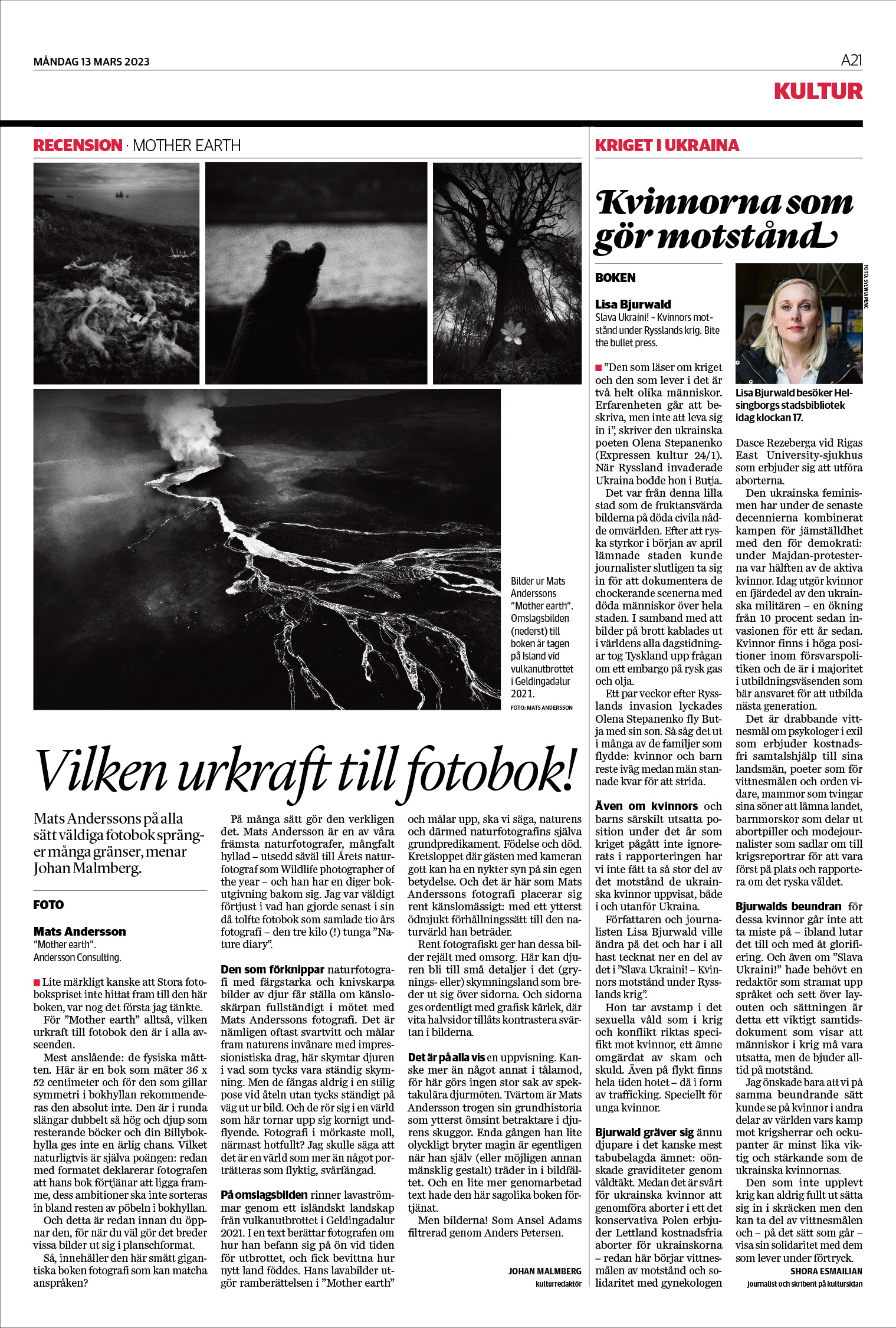What a powerhouse of a photo book!
Mats Andersson's immense photo book is groundbreaking in so many ways, says Johan Malmberg, culture editor at Sydsvenskan.
My initial thought was how strange that Swedens biggest competition for Photobooks "Stora fotobokspriset" did not find a way to include this book.
For "Mother Earth", is indeed a fundamental photo book in all respects.
Vilken urkraft till fotobok!
What a powerhouse of a photo book!
Mats Andersson's immense photo book is groundbreaking in so many ways, says Johan Malmberg, culture editor at Sydsvenskan.
My initial thought was how strange that Swedens biggest competition for Photobooks "Stora fotobokspriset" did not find a way to include this book.
For "Mother Earth", is indeed a fundamental photo book in all respects.
Most impressive; the physical dimensions. This is a book that measures 36x52 centimeters and for those who like symmetry on the bookshelf, I would not recommend it. It is roughly twice as high and deep as the rest of the books and your Billy bookshelf is not given a fair chance. Which, of course, is the very point: already with the format, the photographer declares that his book deserves to be in front, its ambitions should not be sorted among the rest of the “mob” on the bookshelf.
And this is even before you open it, because once you do, some images spread out in poster format.
So, does this slightly gigantic book contain photography to match the claims?
In many ways it certainly does. Mats Andersson is one of our foremost nature photographers, celebrated many times over – winner of titles like Nature Photographer of the Year and Wildlife Photographer of the Year - and he has an extensive record of publications behind him. I was very fond of what he did most recently in his then twelfth photo book that collected ten years of photography – the book “Nature Diary” weighing in at three kilos!
Anyone who associates nature photography with colorful and razor-sharp images of animals may have their emotional perception completely changed in the encounter with Mats Andersson's photography. It is usually black and white and depicts nature's inhabitants with impressionistic features, here we get a glimpse of the animals in what seems to be constant twilight.
Mats' lava pictures form the frame story in "Mother Earth" and conveys, shall we say, nature's and thus the nature photographer's very basic predicate. Birth and death. The circuit where the guest with the camera can have a sober view upon his own importance. And it is here that Mats Andersson's photography places itself emotionally: with an extremely humble approach to the natural world he enters.
It is in every way a show. Perhaps more than anything in patience, because here no big deal is made of spectacular animal encounters. On the contrary, Mats Andersson is faithful to his basic story as an extremely tender observer in the shadows of the animals. Although, I would have wished for at slightly more elaborate text in such a fabulous book.
But the pictures! As Ansel Adams filtered through Anders Petersen.


